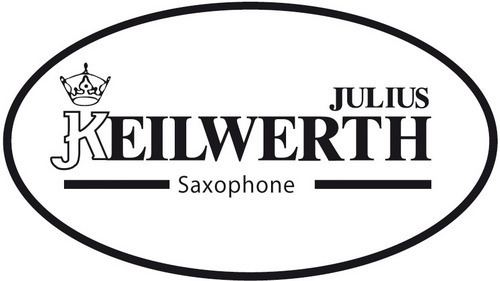Website julius-keilwerth.com Founded 1925 | Headquarters Mantes-la-Ville, France | |
 | ||
Type Limited liability (GmbH) Genre Musical instrument manufacturers Profiles | ||
Julius keilwerth sx90r shadow tenor saxophone pick of the week
The Julius Keilwerth company is a German saxophone manufacturer, established in 1925.
Contents
- Julius keilwerth sx90r shadow tenor saxophone pick of the week
- Early history
- Stencil manufacture
- Changes in ownership
- Product range
- References
Early history
Julius Keilwerth first apprenticed for the Kohlert company in Graslitz, Czechoslovakia. After this apprenticeship, Julius Keilwerth and his brother, Max, established a workshop in their home around 1925 or 1926. They primarily manufactured saxophones for Adler and FX Hüller. The Julius Keilwerth company became one of the largest saxophone manufacturers in Europe by the start of WWII, with approximately 150 workers. After World War II, the company relocated to its present headquarters at Nauheim, Germany.
In 1948, the old Julius Keilwerth production facilities in Graslitz, now Kraslice, became part of the Czech Amati collective, however the first saxophones that Amati sold were still stamped with the "JGK - Best in the World" trademark, had the model name "Toneking" and had Julius Keilwerth serial numbers.
Stencil manufacture
A "stencil" saxophone is a saxophone made by a manufacturer that is then sold to another company that literally takes a stencil and engraves their own information on the horn. The Julius Keilwerth company not only provided entire saxophones to other companies as stencils, but provided saxophone bodies for other companies to affix their own keywork to. As a general rule, Keilwerth stencil saxophones are stamped "Made in Germany."
The most famous entire horn Keilwerth stencils include:-
Note: some saxophones (e.g., Voss, Roxy, Senator, and De Villiers etc.) that appear to have been made by Keilwerth were in fact manufactured by another German company called Dörfler & Jörka. The design and location of the neck screw (which is completely different to the type used by Keilwerth) is a simple but accurate method of identifying Dörfler & Jörka instruments.
Most well-known of the Keilwerth stencils are those made for the W. T. Armstrong Company:
Note: later H. Couf models, like the 3200 and Royalist II were made by the Armstrong company, not the Julius Keilwerth company.
Changes in ownership
In 1986, the company hired jazz saxophonist Peter Ponzol as a consultant to refine and redesign Keilwerth saxophones for the jazz market. This resulted in the "Modell Peter Ponzol" alto and tenor saxophones. By the end of the 1980s, Keilwerth had introduced its SX90R series saxophones and gained endorsements from jazz musicians such as Branford Marsalis, Courtney Pine, Ernie Watts, Don Wise, James Moody, Ron Holloway, Mike Smith and David Liebman.
Boosey & Hawkes purchased Keilwerth in 1989 and merged the company with Schreiber in 1996. The combined company was sold to The Music Group in 2003. In 2006 The Music Group was broken up. Schreiber & Keilwerth became an independent company. In March 2010, Schreiber & Keilwerth filed for insolvency. On 1 August 2010 they were subsequently acquired by Buffet Crampon.
Product range
As of 2009, Julius Keilwerth markets a range of student, intermediate and professional saxophones, from the soprano to bass saxophones. The ST90 student range, the EX90 intermediate range and the SX90, CX90, SX90R professional range - the SX90R featuring soldered-on tonehole rings (as opposed to more typical drawn toneholes).
Various changes in production of the ST90 and EX90 series have taken place:
Historical professional models include:
Most of these historical models were also available with different "packages," such as "EX" ("Exklusiv") with more elaborate engraving, additional keywork, additional mother-of-pearl inlay, or drawn and rolled tone holes.
Julius Keilwerth also produced a limited quantity of a saxophone-shaped trumpet called the "Toneking 3000." There may have been other brief forays into making other woodwinds or brasswinds, but no records are available as of this writing (February 2012).
